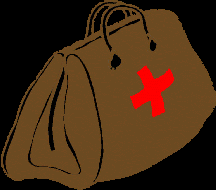10 most
Deadly Snakes
|
Snakes - First Aid Information
|

|
|
Before discussing first aid it is important to say here and now that your first option should be to stay calm as possible and seek professional help at a hospital or from a medical professional if at all possible. Self treatment is never advised. These instructions should never be used over the advice of a medical professional and are provided only for people who find themselves alone with no other option in an attempt to provide some measure of treatment until professional help arrives. No matter what it says here if a medical professional tells you something different follow the instructions of the medical professional. Although care has been taken in gathering this information it should not be used as a substitute for professional medical help or advice. There are many factors that influence the seriousness of a bite. Some of these factors include the person's health, age, size, and psychological state. It goes without saying that the healthier you are, the larger and younger you are, your ability to remain calm and manage your psychological state, the better your chances of surviving a bite. In addition there are bite factors that come into play. The penetration of one or both fangs, amount of venom injected, the location of the bite (proximity to major blood vessels), the health of the snake, and the time that has passed since the snake last used it's venom. Of course it goes without saying that one penetrating fang is better than two and snakes do not always inject the same amount of venom for each bite. Usually less venom is used when subject is not going to be dinner. Proximity to major blood vessels matters because that will decide how quickly the venom is circulated throughout the body. I cannot emphasize enough that if you are bitten by a snake your first response should be to remain calm and seek professional help and take the advice they give you while you are waiting for emergency help to arrive. If however, you are alone or out of reach of professional help what I am reprinting here may help save your life or the life of someone you love. The following is a listing from the Pressure-immobilization first aid technique which was developed by Professor Struan Sutherland in the 1970's. This method has treatments based on the location of the bite on the body. More information about bites, stings, and venom can be found on "My Dr.Com". You can also check out our resource page for more informtion about snakes and bites.
Bites to the lower limb
Apply a broad pressure bandage over the bite site as soon as possible. Do not take off clothing, as the movement of doing so will promote the movement of venom. Keep the bitten limb and the patient, still.
Bites to the hand or forearm
Bandage as much of the arm as possible, starting at the fingers.
Bites to the trunk
If possible apply firm pressure over the bitten area. Do not restrict chest movement.
Bites to the head or neck
No first aid for bitten area. The instructions end with the advice that the treating doctor should decide when to remove the bandages. They should be left in position until appropriate antivenin and resuscitation equipment have been assembled. |